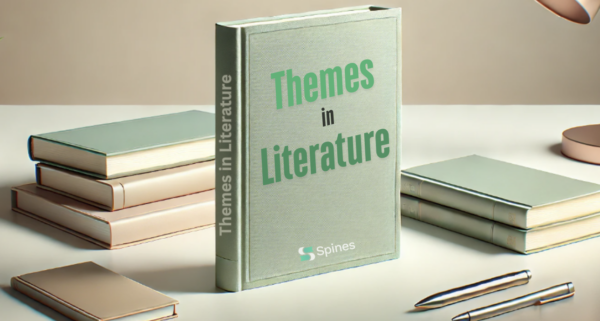
Why do we keep coming back to fairy tales? Is it the magic? The drama? Or maybe it’s the wicked satisfaction of seeing villains get what’s coming to them (or not, if you’re feeling generous). Whatever the reason, these stories have enchanted us for centuries, proving that a glass slipper, a poisoned apple, or a magic lamp never truly goes out of style.
But here’s the thing: “old fairy tales” don’t have to stay old. The best part of writing fairy tale retellings is breathing new life into those “classic fairy tales” we all know and love. Whether you’re setting “Cinderella” in a “modern setting,” telling “Sleeping Beauty” from the “wicked witch’s perspective,” or reimagining “Red Riding Hood” in space (because why not?), there’s endless potential to give a “unique new spin” to these timeless tales.
This article is your enchanted map, guiding you through the steps to craft a “great fairy tale retelling” that blends “source material” with fresh creativity. From picking the perfect story idea to polishing your draft and getting published, you’re about to embark on an exciting creative journey. So, grab your pen (or wand) and get ready to write your “own story.” After all, who says the “fairy godmother” gets to have all the fun?
The Magic Begins: Choosing Your Tale
Every “great fairy tale retelling” starts with a question: Which tale is calling your name? With so many “classic fairy tales” out there, the possibilities are as endless as Rapunzel’s hair. Whether it’s “The Little Mermaid” swimming through your mind, “Sleeping Beauty” whispering from her slumber, or “Snow White” and her seven quirky roommates catching your eye, the key is to pick a particular fairy tale that resonates with you on a personal level. After all, if you’re not enchanted by the story, how can you expect your readers to be?
Once you’ve chosen your tale, it’s time to work some creative magic. Ask yourself: Is there an “untapped angle” waiting to be explored? Maybe it’s the “not-so-evil queen” struggling with her bad PR, or the overlooked “fairy godmother” juggling her wand and a midlife crisis. By shining a spotlight on “minor characters” or asking what if? questions, you can transform the “same story” into something fresh and exciting.
For inspiration, look to “popular fairy tale retellings” like The Lunar Chronicles, where Cinderella becomes a cyborg, or Wicked, which reimagines the “wicked witch” of Oz. These stories show how a “unique spin” can turn popular fairy tale retellings into something extraordinary.
Finally, don’t forget to check the “public domain” status of your chosen tale. While “old fairy tales” like “Cinderella” or “Red Riding Hood” are fair game, more recent works (looking at you, Disney) may come with strings attached. So, pick your “source material” wisely, and you’ll be ready to craft a retelling that’s as timeless as it is original!
Your Publishing Journey Awaits – Start NowPlot Twist: Crafting a Unique Spin
So, you’ve chosen your “original fairy tale.” Now comes the fun part: giving it a “unique spin” that transforms the “same story” into something entirely your own. The trick is to maintain a “firm grasp” on the heart of the “original tale” while introducing enough fresh ideas to make it stand out. After all, the goal isn’t to rewrite Cinderella word-for-word—it’s to reimagine her journey in a way only you can.
New Genre, New Magic
One surefire way to breathe life into “old fairy tales” is to place them in a “new genre.” What if Sleeping Beauty became a “sci-fi” thriller set on a starship? Or did Red Riding Hood become a dystopian saga where the Big Bad Wolf is a corrupt corporation? Moving the “original story” into unfamiliar territory can create endless creative possibilities while still nodding to the familiar.
Who’s Telling the Story?
Another great way to create a “unique fairy tale retelling” is to flip the perspective. Ever wondered what the “wicked witch” or the “fairy godmother” might have to say? Retelling from a “villain’s perspective” or focusing on one story or a “side character” like the prince’s overlooked best friend can completely reshape the narrative. A “not-so-evil queen” battling palace politics, anyone?
Themes That Speak to Today
Want to make your retelling feel fresh and relevant? Add themes that resonate with modern readers. Blend “self-discovery” arcs, “romantic relationships,” or even tackle deeper issues like social inequality or climate change. Think of a “Cinderella retelling” set in a “modern setting” where the glass slipper is a job application, and you’re already halfway to a bestseller.
Balancing Creativity with Tradition
While your creative license and freedom is your best friend, don’t abandon your readers’ favorite “plot points” completely. Whether it’s the poisoned apple, the ball, or the iconic red cape, these little nods to the “source material” act as breadcrumbs to guide your audience through your “new story.” The key is to mix familiarity with surprise, so readers think, I know this story—but I’ve never seen it like this before.
With a dash of creativity and a sprinkle of magic, your retelling can go from an “old fairy tale” to a “great example” of innovative storytelling. So, grab that wand (or keyboard), and let the twisty plotting begin!
Building the World: Setting the Stage
Every “great fairy tale retelling” needs a world that feels as enchanting as the tale itself. Whether you’re crafting a sprawling “fantasy novel,” a sleek “sci-fi” epic, or something entirely unexpected, the setting should immerse readers in your original story, and make them believe in its magic. The secret? Blending the essence of the “original story” with fresh, imaginative details that create something entirely new.
- Fantasy, Sci-Fi, or Something Else Entirely?: When worldbuilding, think about how the genre shapes the “new setting.” A “fantasy novel” might lean into castles, enchanted forests, and ancient curses, while a “sci-fi” retelling could swap the “glass slipper” for a biometric key or set “Sleeping Beauty” in a cryogenic pod on a distant planet. The genre you choose will determine the rules of your world, from its technology to its magic system.
- Keeping the Magic Alive: Even when you’re reimagining the story in a “different era” or aesthetic, the heart of the fairy tale should remain intact. Retain iconic elements like the “magic lamp,” the poisoned apple, or the fairy godmother, but adapt them to fit logically into your new world. For instance, a “Red Riding Hood” set in a cyberpunk city might feature a hacker “wolf” and a GPS-tracked red hoodie.
- Building an Atmosphere That Enchants: To fully transport readers, focus on creating a vivid, atmospheric world. Incorporate sensory details: How does the air smell in this enchanted forest? What’s the hum of machinery like in your dystopian city? Take inspiration from “great examples” like Neil Gaiman’s works, which are rich in texture and mood, blending whimsy and darkness in equal measure.
- Fairy Tale Touchstones: Finally, don’t forget to weave in small but essential nods to the “original tale”—those magical touchstones that anchor the reader in the story. The trick is to incorporate them subtly and logically so they enhance your world without feeling forced. After all, the best retellings are those where the magic feels like it belongs, whether in a castle or on a starship.
With the right worldbuilding, your readers won’t just read your “unique fairy tale retelling”—they’ll live it. So, grab your “plot points” and start building!
Characters in a New Light: Casting Your Tale
Fairy tale characters are iconic—there’s the “wicked witch,” the “young woman” with big dreams, the charming prince, and, of course, the always-underappreciated “side characters.” But if you want to craft a “unique fairy tale retelling,” it’s time to break out your magic wand (or keyboard) and breathe new life into these archetypes. The goal? Make them fresh, dynamic, and unforgettable while still giving readers a hint of that fairy tale nostalgia.
From Archetype to Fully Fleshed-Out People
- Start with your protagonist. Sure, she could be the damsel in distress, but why not turn her into a warrior, a scholar, or even a reluctant hero who’d rather stay home than save the kingdom? That “young woman” can be more than a pretty face waiting for true love—she could be an inventor, a detective, or a self-proclaimed villain out for redemption. The possibilities are endless, and the more layered your characters, the more your readers will connect with them.
Side Characters Stealing the Show
- Don’t forget the “side characters” who often get lost in the shuffle. Maybe the prince’s sassy best friend is secretly the brains of the operation, or the talking mirror in “Snow White” has his own tragic backstory. Giving these characters depth and agency can elevate your “own story” from predictable to exceptional.
Humanizing Villains and Surprising Allies
- Every “wicked witch” deserves her side of the story, and every “fairy godmother” has a past. Maybe your witch is a misunderstood outcast trying to protect her homeland, or your godmother is a retired magic dealer trying to go legit. By humanizing your villains and allies, you’ll create a cast of characters with relatable flaws, motivations, and dreams. After all, readers love a “not-so-evil queen” with a snarky sense of humor or a fairy godmother with a grudge.
Motivations That Matter
- No matter how fantastical your characters are, they need emotions and motivations that feel real. Why does the villain want revenge? Why is the hero so desperate for that magic lamp? When characters act from relatable desires—like love, fear, ambition, or self-discovery—readers will care about their journey, no matter how many talking animals or enchanted forests they encounter.
Reimagining your “classic fairy tale” characters is the key to creating a “great fairy tale retelling.” So, dive deep, ask tough questions, and don’t be afraid to let your villains cry or your heroes falter. In the end, the characters will be what your readers remember most—long after the “glass slipper” fits.
Your Publishing Journey Awaits – Start NowWeaving the Story Inside: Writing the First Draft
What is the hardest part of writing a “great fairy tale retelling”? Starting. Staring at a blank page can feel more intimidating than facing down a “wicked witch.” But here’s a little secret: your first draft doesn’t need to be perfect—it just needs to exist. So, grab your pen (or keyboard) and get to it! Remember, “every first draft has a glass slipper that doesn’t quite fit.” That’s what editing is for.
Before you dive in, take a moment to map out your story. A good retelling balances “two stories”—the “original tale” and your reimagined spin. Identify the key “plot points” you want to keep (like the iconic ball in Cinderella or the poisoned apple in Snow White) and figure out how they fit into your “new story.” Weaving the “source material” into your fresh perspective can be tricky, but with a solid outline, you’ll know exactly where the magic happens.
Pacing: Short vs. Long
Are you crafting a quick, punchy short story or a sprawling “fantasy novel”? Pacing will vary depending on the format. Short stories require laser focus—zeroing in on one pivotal moment or unique angle of the tale. Novels, on the other hand, give you room to expand, explore subplots, and dive deep into your characters’ arcs.
From Spark to Scene
When the “first spark” of inspiration hits, grab it before it slips away. Don’t worry about making each scene perfect—just get your ideas on paper. Need a nudge? Start with the scene that excites you most, whether it’s a reimagined ball in a “modern setting” or a battle of wits between a “wicked witch” and her rebellious apprentice.
Let the Slipper Fit Later
Drafting isn’t about perfection—it’s about discovery. Embrace the messiness and unexpected twists. You can fix the pacing, polish the dialogue, and adjust the tone later. For now, just write. Because the only thing scarier than a blank page is a story left untold.
So, what are you waiting for? Start weaving your story and trust that even the wonkiest first draft has the potential to become your “own version” of a “great fairy tale retelling.”
Polishing the Magic: Editing and Refining
Once your first draft is complete, congratulations—you’ve spun straw into… well, something that might be gold. Now it’s time for the “nitty-gritty” part of the process: editing. This is where you refine your story, ensuring it’s clear, engaging, and stays true to your vision. Think of it as carving a diamond out of the rough—except your “diamond” is a “great fairy tale retelling,” and your “rough” probably includes at least one plot hole and a character who vanishes halfway through.
Editing can feel like wielding a very sharp wand, especially when you need to cut scenes, characters, or descriptions you adore. But if a beloved passage doesn’t serve the story, it has to go. As the saying goes, “Kill your darlings”—but, of course, spare the fairy godmother unless her backstory really drags things down. Every word should propel your “new story idea” forward.
Beta readers and critique partners are invaluable allies on your editing journey. Look for people familiar with original fairy tales, tale retellings or your chosen genre—they’ll know when your “magic lamp” shines and when it flickers. Honest feedback can help you spot weak “plot points,” confusing scenes, or characters that need more depth.
For grammar and style, tools like ProWritingAid or Grammarly are your best friends. They can help you clean up clunky sentences, catch typos, and ensure your prose is as polished as Cinderella’s “glass slipper.” Just remember: no automated tool can replace your own judgment, so don’t lose your unique voice in the process.
Editing is where your “own story” transforms from a rough draft to a dazzling retelling. Be patient, trust the process, and don’t be afraid to make bold cuts or revisions. In the end, the effort will be worth it when your tale shines like a “great example” of innovative storytelling. Now, polish that magic—your readers are waiting!
Your Publishing Journey Awaits – Start NowSharing the Tale: Publishing Your Retelling
So, you’ve woven your “unique fairy tale retelling,” polished it to perfection, and are ready to set it free into the world. But how do you share your writing of fairy tale retellings so that readers can discover it? The good news is there are multiple paths to publishing, whether you’re dreaming of landing a traditional book deal or exploring the freedom of self-publishing.
The Traditional Path
If your retelling of most fairy tales is a full-length “fantasy novel,” traditional publishing might be the way to go. Start by querying literary agents who specialize in fantasy or fairytale-inspired works. Your pitch should highlight what makes your retelling stand out—whether it’s a “villain’s perspective” twist or a jaw-dropping “new genre” setting like sci-fi. Agents are always looking for fresh takes on familiar stories, so make sure your “own version” sparkles with originality.
The Self-Publishing Route
For shorter works or niche “fairy tale retellings,” self-publishing offers a direct path to readers. This is where Spines shines! Spines specializes in empowering self-published authors, offering tools and guidance for everything from designing a stunning book cover to formatting your manuscript. With Spines, you can bring the other story or your retelling to life exactly the way you envision it—no gatekeepers, just creative freedom.
Anthologies and Short Story Collections
Another trend in the fairy tale world is submitting “short stories” to themed anthologies. These collections often feature retellings from a variety of authors and are a great way to get your work in front of an audience. Research publishers or competitions focused on fairy tale themes, and write and submit your best work.
Marketing Your Tale
Whether you go traditional or indie, marketing is essential. Leverage social media to share the magic behind your story—think character art, dreamy quotes, or even behind-the-scenes peeks at your creative process. Creating visually appealing promos can help your “own story” stand out in a crowded market. Platforms like Instagram and TikTok are great for reaching readers who adore fresh takes on “old fairy tales.”
With the right approach, you can share your retelling with the world, whether through a publishing house, an anthology, or your own self-publishing journey with Spines. However, you choose to publish, remember: you are writing a fairy tale that deserves to be told!
Writing and Publishing Fairy Tale Retellings: Happily Ever After
Now that you’ve got the tools, it’s time to create your “own story”—your “great fairy tale retelling.” Whether you’re reimagining “Cinderella” in a “modern setting,” giving the “wicked witch” a heartfelt redemption arc, or setting “Red Riding Hood” in a sci-fi dystopia, your own retelling will bring something special to “the same story” we’ve all grown up with.
So, take that first step. Start writing, refining, and dreaming. Who knows? Your tale could become the next Lunar Chronicles, reinvent a “glass slipper,” or redefine the “magic lamp” forever. The world is waiting for your twist on “old fairy tales.” Go make it magical!
Your Publishing Journey Awaits – Start Now







